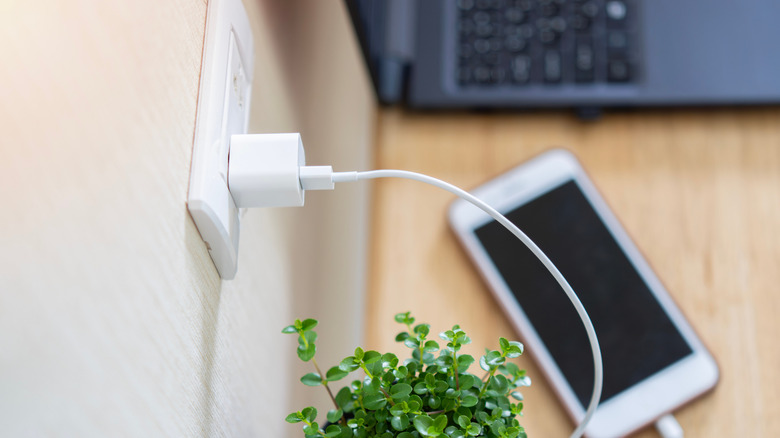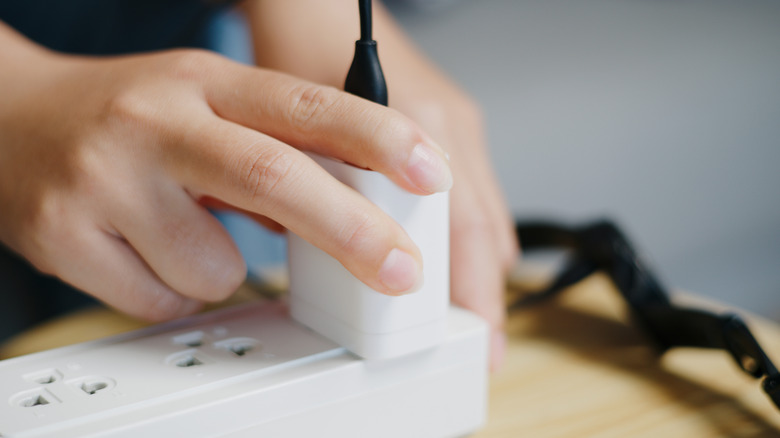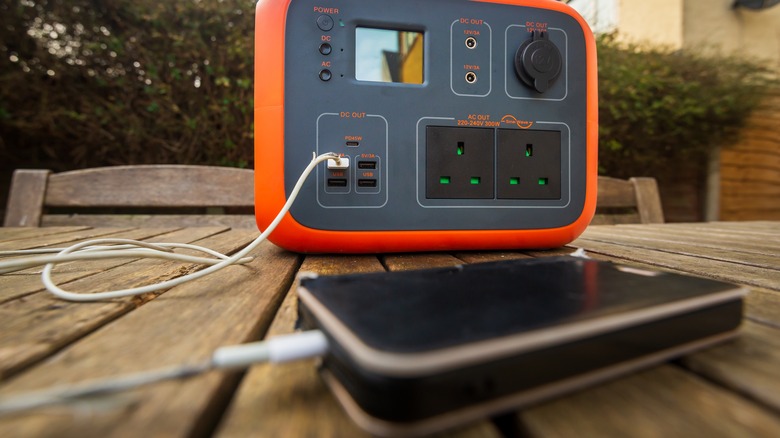Are Phone Chargers AC Or DC? (And Why Does It Matter?)
While seemingly mundane, wall phone chargers — whether that's a GaN phone charger, fast charger, or just the regular USB-A charger — have become a necessary staple in your daily routine. You need it every few hours, and without it, you and your phone will be left powerless (pun intended). Normally, you wouldn't give much thought to how a phone charger works behind the scenes. It just does its magic as soon as you plug it into a wall socket.
But it's an entirely different story when you're nowhere near a regular outlet. Maybe you're out camping and using an alternative charging setup with multiple output types. Or perhaps you're on an RV, truck, or airplane offering a different power source. In those cases, it's crucial to identify whether your phone charger is AC or DC. If you connect it to the wrong source, it will simply not work or may even get damaged. So, before you go about charging your phone anywhere but at home, make sure you first understand whether it runs on AC or DC.
The inner workings of wall phone chargers
All phone charger brands are technically both AC and DC. They're called AC/DC power adapters for a reason. In terms of input, phone chargers are AC. When you look at the printed specifications on your charger, you'll see the label ~50-60Hz, which means it requires an alternating current to work. The input voltage is listed to be 100 to 240V, too, which is the typical voltage rating for AC wall sockets and is less common for DC sources.
When it comes to the output, though, phone chargers are DC. It supplies DC power to your phone's battery, which only accepts direct current electricity, like all batteries do. Printed on the charger next to the "Output" is the DC icon (two straight lines, one of which is dotted) to indicate this.
How your phone charger delivers DC power to your phone — even though it plugs into an AC outlet — is through a process called power conversion. The charger is integrated with different key components, including a transformer, rectifier, and regulator. These work together to decrease and convert the high input AC voltage from your wall socket to a lower and more usable DC voltage for your phone's battery.
So with all that being said, are phone chargers AC or DC? They use both current types. Your phone charger runs on AC input, and then supplies DC output to your mobile device.
Wall phone chargers versus other charging options
So, why should you even care if your phone charger is AC or DC? Because plugging a phone charger into a wall outlet isn't the only way you can charge your mobile device. Sure, this may be the most frequent way of doing so, but there will be instances when you need to rely on a different charging option. These alternative options include charging with a portable generator, power bank, your car's cigarette lighter socket, and maybe even your laptop's USB port. Now, knowing that your wall phone charger needs an AC input but delivers a DC output, how would you use it with these other power sources?
For portable generators, many popular brands come complete with both AC and DC outlets. This means you can connect your phone charger to one of the 120 or 240V sockets, and it will work just like it would at home. If you want to do away with the charger, though, you can also use the portable generator's DC USB ports to directly charge your phone. Just plug in a USB cable, and you're good to go. You wouldn't need an AC/DC adapter for this because the power source already supplies the DC output your phone battery needs.
If you have a power bank, a car cigarette lighter socket, and a laptop USB port, you can skip using a charger adapter, too. These alternative sources provide a DC output, so all you need is a USB cord to connect your mobile device. And since they don't deliver AC power, your phone charger wouldn't even work with them at all.


